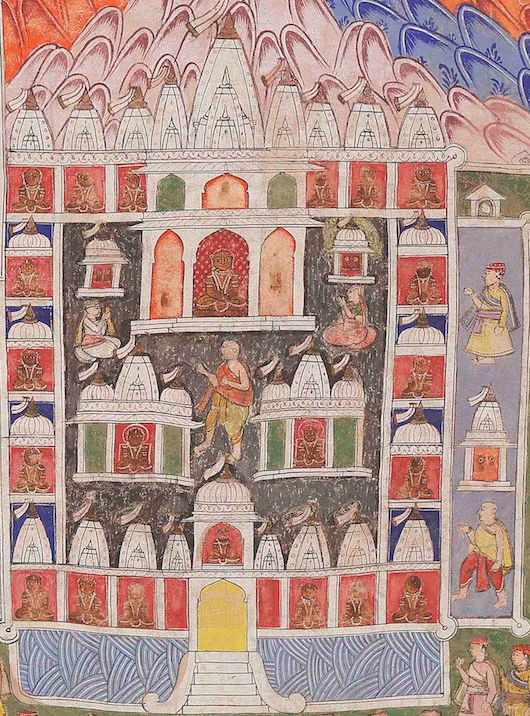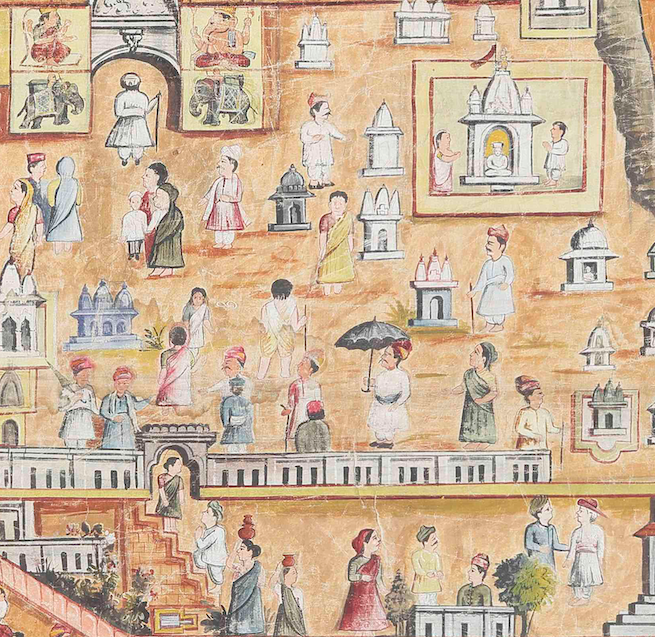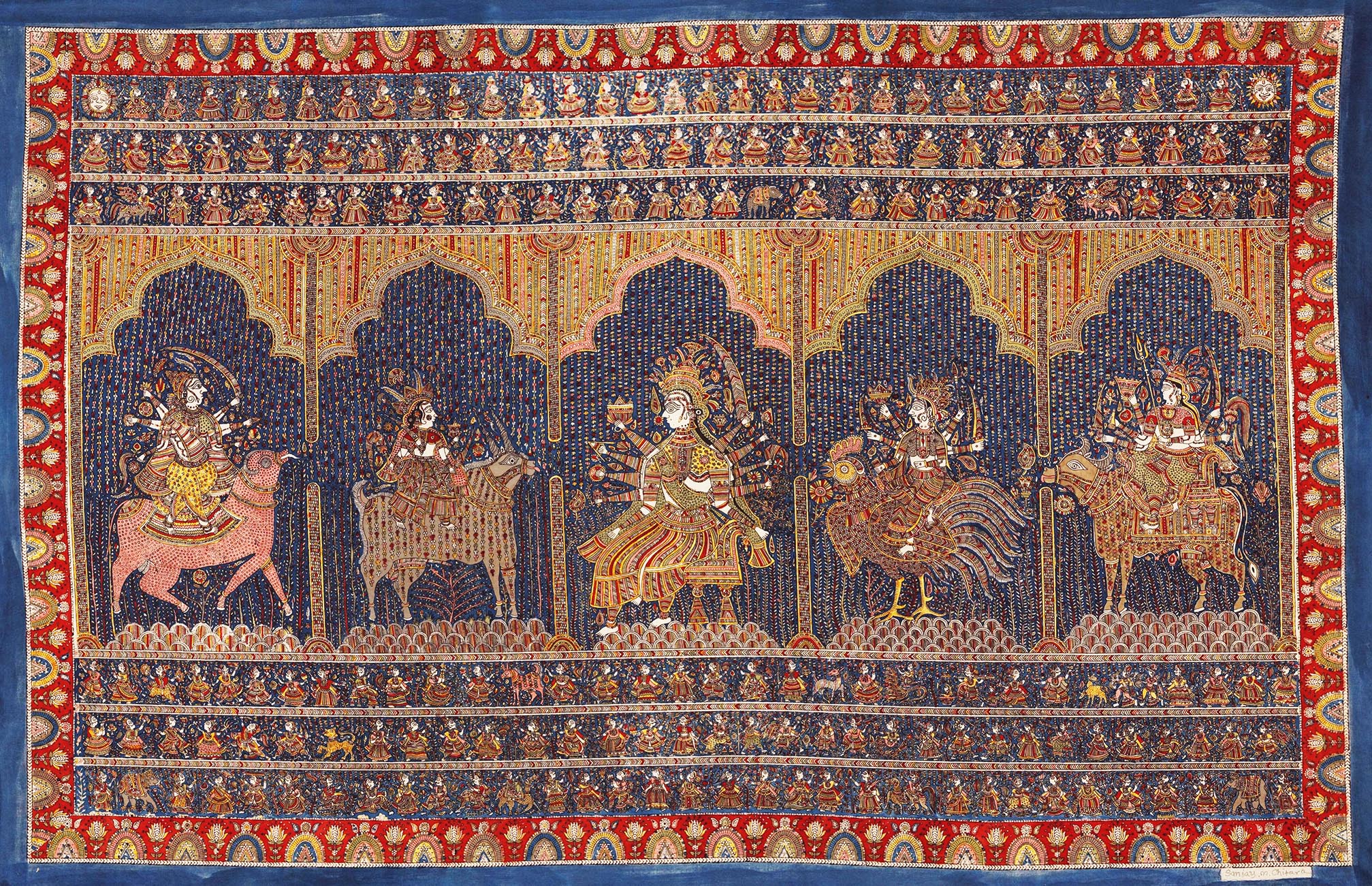
Mata ni Pachedi, 21st century, Cotton cloth hand painted and block printed with natural dyes, by Sanjay M. Chitara © Sarmaya Arts Foundation 2017.17.1
The Sarmaya Arts Foundation has a range of over 70 Mata-ni-Pachedi (also called the Mata-no- Chandarvo) cloth paintings in its collection. A folk-art form that’s popularly called the Kalamkari tradition of Gujarat, Mata-ni-Pachedi is a textile painting that is hand-block-printed and hand-painted by the Vaghri community in Ahmedabad. A traditional Mata-ni-Pachedi textile usually depicts a goddess in the centre, inside a pillared temple shrine. This textile is then used as decoration on the temple walls and/or as a backdrop to the shrine.
The artist community i.e. the Vaghris were a semi-nomadic tribe from western India, namely from Ahmedabad and Kaira district. Traditionally, they made a living by basket-, rope- and net-making, selling datoon (twigs used as dental chew sticks), fruits, fodder, thistle et al, and providing seasonal labour on farms. The Vaghri tribe, which comprises about 22 sub-castes, were not allowed to enter Hindu shrines to worship. Thus, they began the practice of painting textile canopies that would act as temple walls for their semi-permanent shrines. They built their settlements, known as Vaghri Vados, outside the villages where they worked. Their temples were built as an extension to their houses, both seen as semi-permanent due to the tribe’s nomadic nature. While most historians and anthropologists can only trace the art back to 300 years, several artists insist that the artform has been practiced by their family for 700-1000 years.
Divine feminine
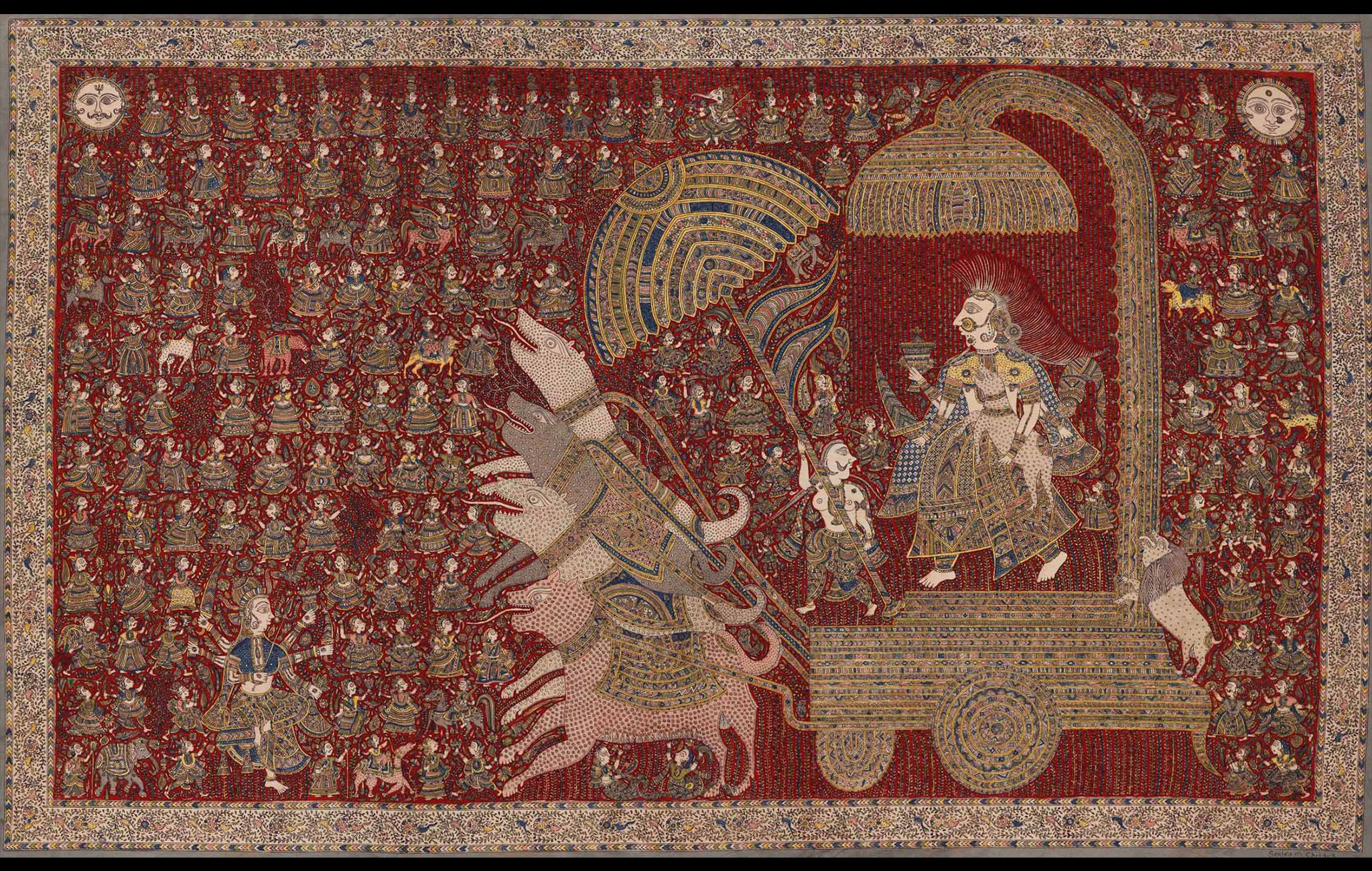
Hadkai Mata, Sanjay M. Chitara, 21st Century © Sarmaya Arts Foundation
Like all folk traditions in India, Mata-ni-Pachedi has many origin stories. One of the legends goes as follows: Once upon a time, the peoples of the Vaghri, Bhangi, Dhedh and Rebari communities all went through a long spell during which they neglected to worship their protector, the Mother-Goddess. Infuriated at the disrespect, the Goddess unleashes wrath on her believers. They are faced with calamities and illnesses of various kinds. Troubled, they seek the help of a shaman. The shaman advises them to make the image of the goddess on cloth, hang it on the walls of the temple and perform ritual offerings. They follow these instructions and this, finally, appeases the Goddess. Thus, the tradition of Mata-ni-pachedi was born. Various goddesses are worshipped by the communities for protection or the fulfilment of specific wishes.
The legends of the goddesses, on the other hand, are known to be closely related to the Devi or Shakti cult. Shakti is the complete incarnation of Adi-Shakti and in popular narrative takes three forms: Mahalaxmi, the goddess of strength; Mahakali, the goddess of destruction; and Mahasaraswati, the goddess of benevolence. Their counterparts in Vaghri mythology are Goddess Ambika, Goddess Kalki and Goddess Bahuchara.
Vaghris also worship specific goddesses that protect them from illnesses and plague like Shitala Mata, protector against smallpox, Hadkai Mata, protector against rabies and Meladi Mata, protector against epidemics. Goddesses Shitala and Hadkai are venerated around India, but Meladi Mata is specific to Gujarat and she’s often depicted on Chandarvo textiles. Her name is derived from the Gujarati word ‘melu’ meaning dirt, and she is worshipped by Dalits and other oppressed communities of the region.
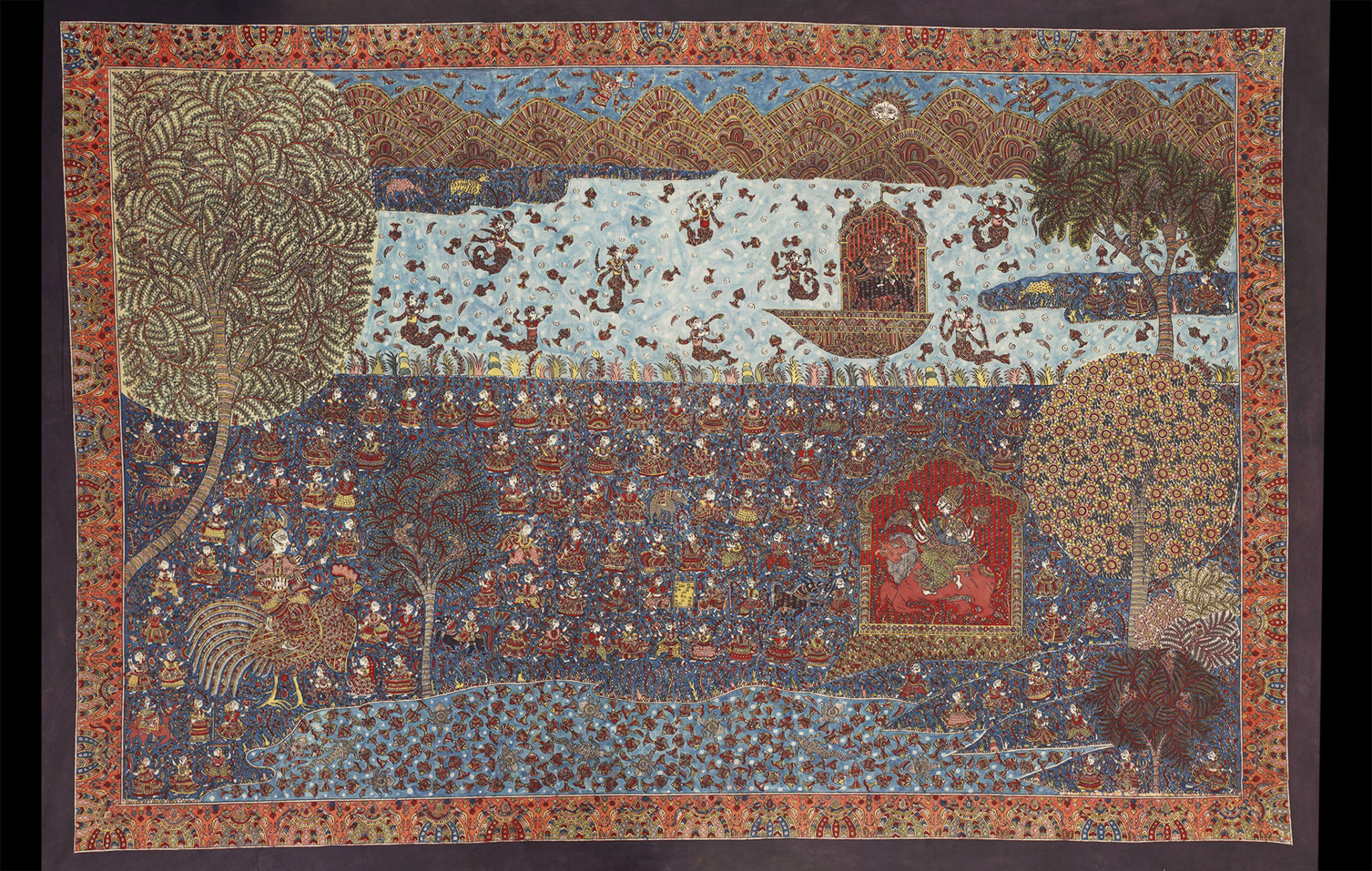
Durga, Bahuchara and Meladi Mata, Mata ni Pachedi by Sanjay Chiatra, Block printed with natural dyes on cotton cloth, early 21st-century © Sarmaya Arts Foundation 2018.1.1
Another group of goddesses worshipped come from the tradition of deifying living women from the Charan caste. Charani, as the women are called, are believed to possess divine powers. They are believed to be able to curse and heal devotees and, in gratitude, are offered sacrifices. Sometimes when a Charani woman with a large following dies, she is given the permanent status of a goddess. Goddess Momai, the one who sits on a camel and is the protector of the Rebari community, is one such Charani woman-turned-Goddess. A Charani woman can also enter an already existing Goddess cult. For example, any Charani woman who provides evidence that she is a Jhapadi, ie a spirit of Vaghri ancestors, is considered as the human incarnation of Goddess Shikotar aka Vahanvati Mata.
Traditional frames
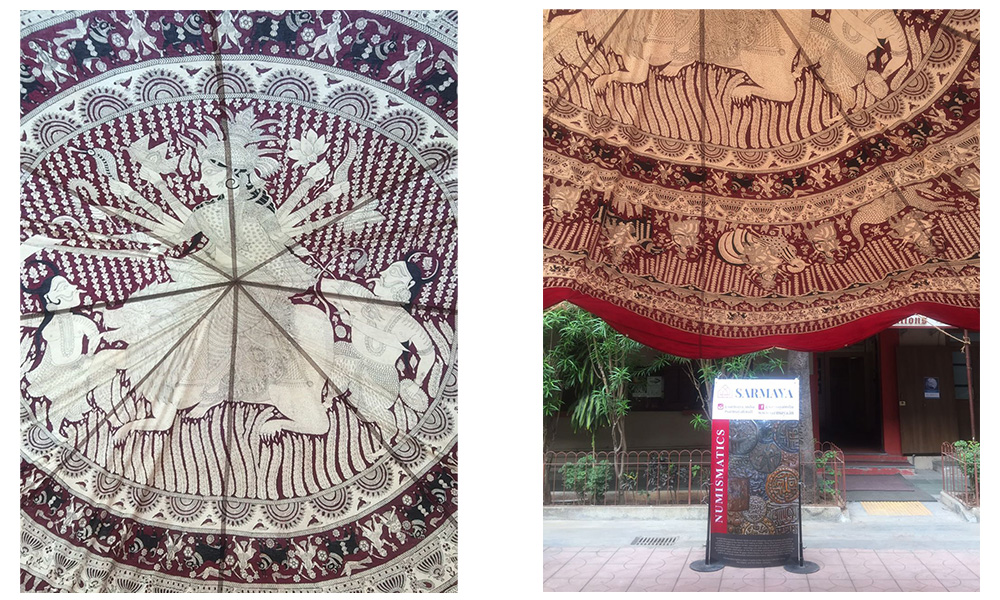
Mato-no-Chandarvo canopy mounted by Sarmaya at St Xavier's College, Mumbai 2018
In the early-19th Century, Mata-ni-Pachedis followed a set form of painting and printing. The square type was known as Chandarvo, and the rectangular ones as Lambo.
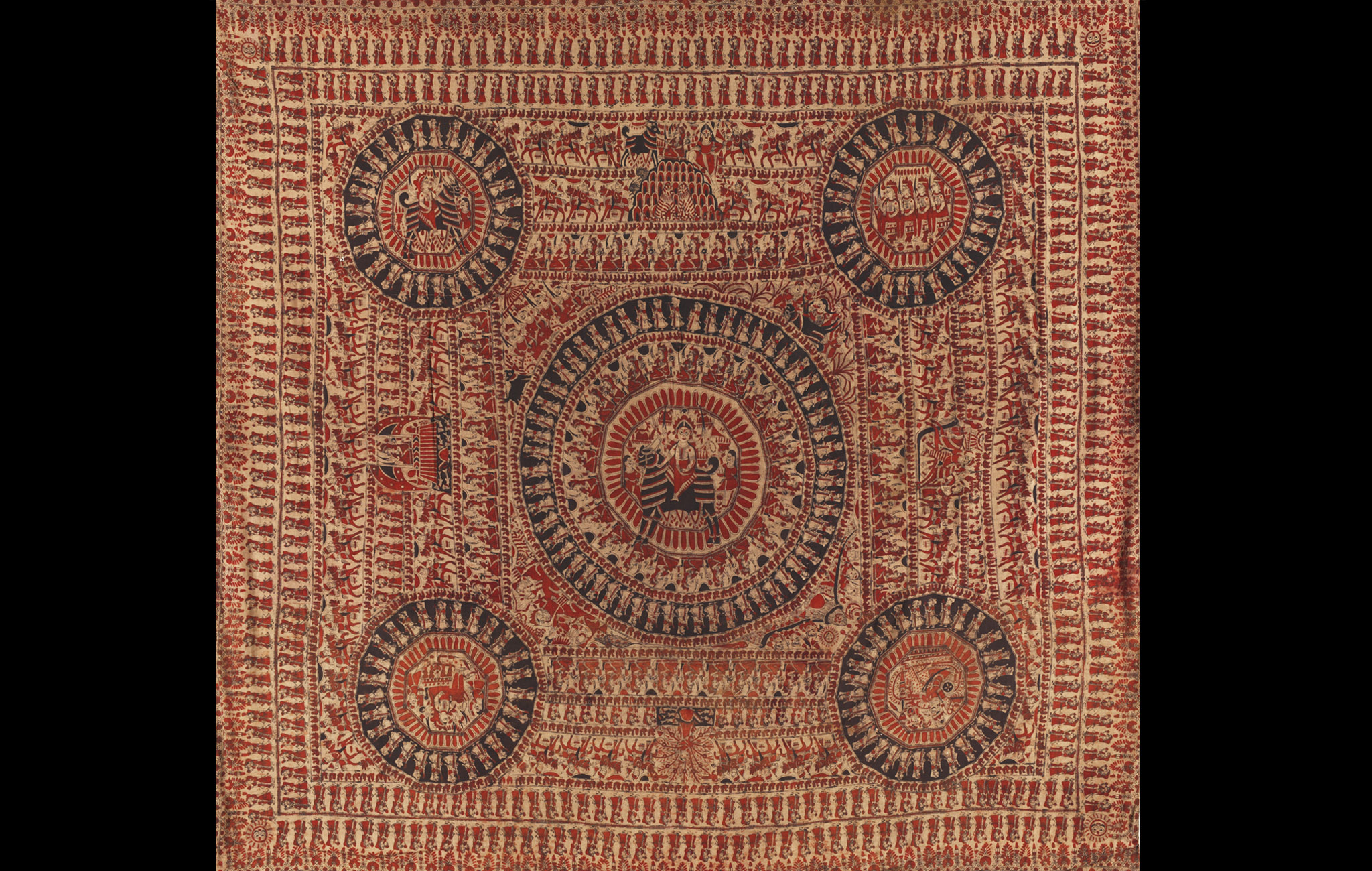
Chandarvo (Mata ni Pachedi) © Sarmaya Arts Foundation 2017.22.1
Chandarvos would feature the Mother Goddess of the community in the centre inside a circle. The circle would be placed inside a square border, which would in turn be in another square border, so on and so forth. These borders would have block-printed figures of garland- or lamp-carrying worshippers, ancestors and other Goddesses on their mounts or vahans. Occasionally, the larger square textiles would have the central design repeated on its four corners.
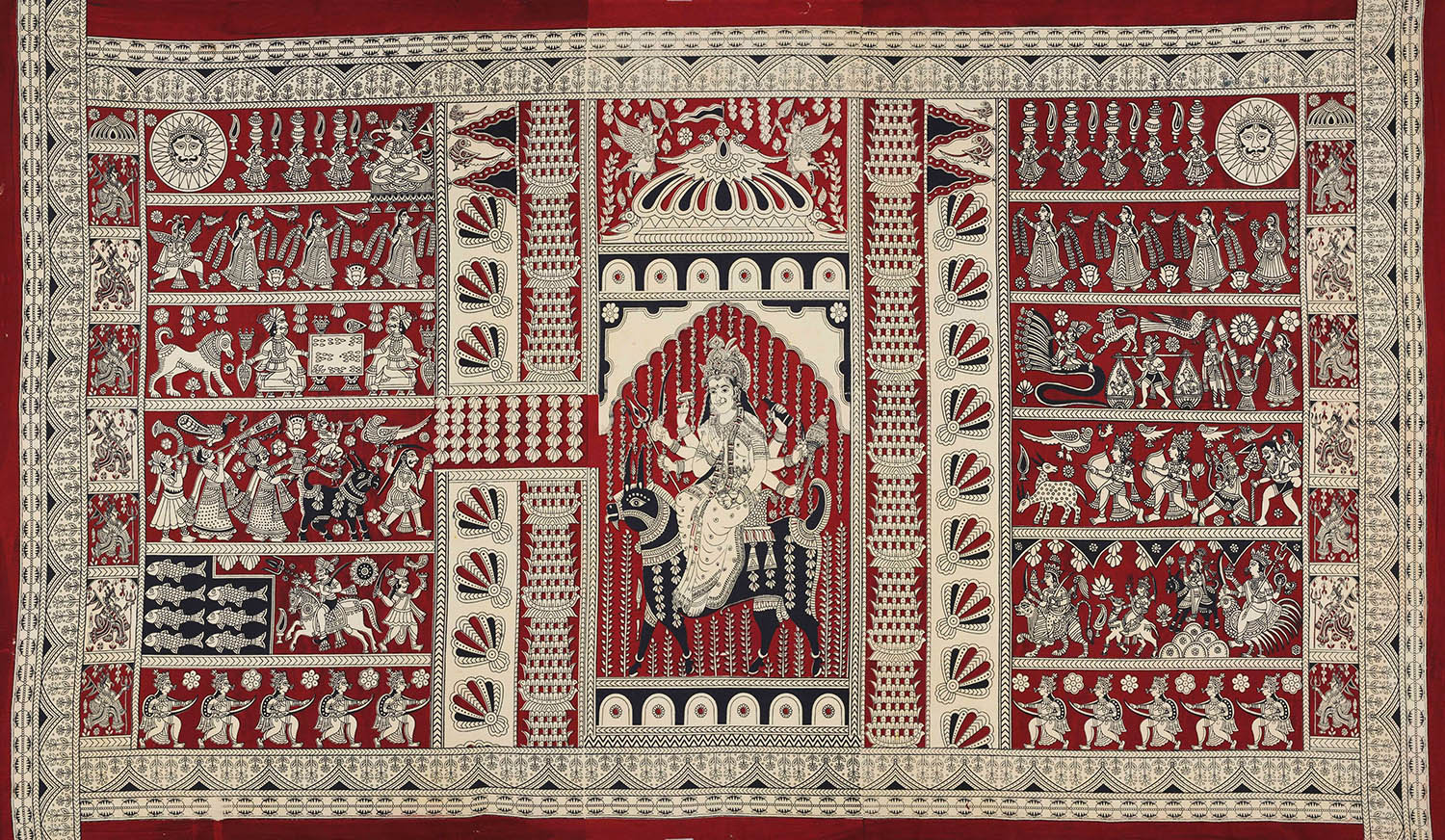
Meladi Mata, Dye on cloth, Manubai Chitara © Sarmaya Arts Foundation
The Lambo form also features the Mother Goddess of the community in the centre, painted inside a decorative dome and pillar design, representative of a temple. On either side of this central frame, 6-12 parallel rows are made. Inside these rows, block printed figures of garland or lamp carrying worshippers, ancestors on horses and other Goddesses with their vehicles are featured. More important figures were drawn in the middle rows. Sometimes, these rows would also carry illustrations of episodes from the Ramayana or Mahabharata, as well as scenes from sacred ceremonies like the goat sacrifice.
Outside the divine
Ahmedabad in Gujarat continues to be one of the largest centers to produce both traditionally crafted as well as modern Mata-ni-Pachedi compositions. Initially, the compositions were rather large-scaled and could substitute as canopies for the ceiling of a shrine (Mata-no-Chandarvo), however, nowadays patrons and collectors prefer smaller scale Mata’s that are easier to transport and display.
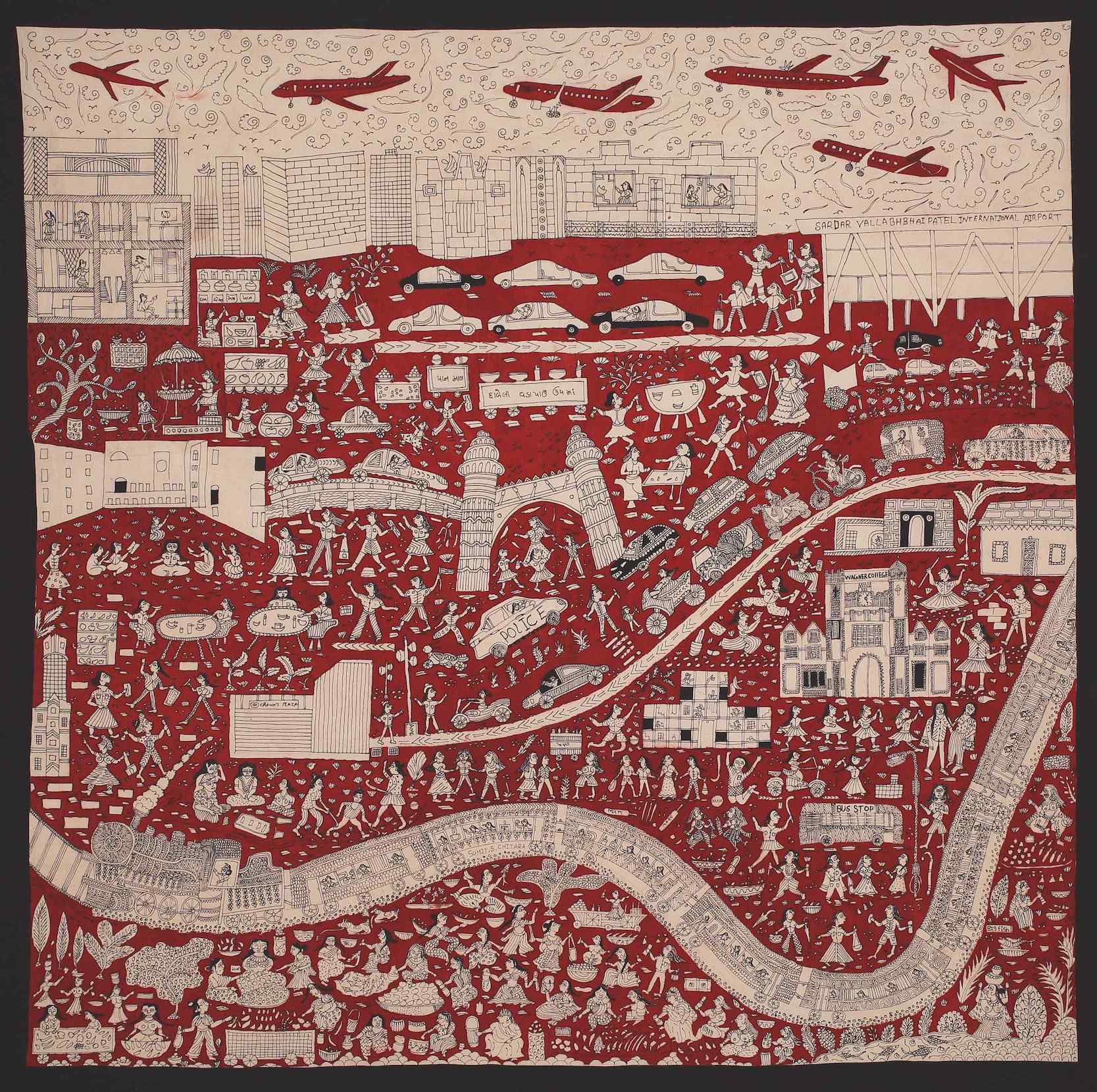
Image: Cityscape, Ahmedabad, 2020, Sanjay Chitara & Sumit Chitara, Mata-ni-Pachedi @ Sarmaya Arts Foundation (2020.17.1)
National Award-winning artist Sanjay Chitara believes that the main purpose of a Chandarvo or Mata-ni-Pachedi textile has changed today. From primarily being used as a devotional work of art, today the composition and the purpose of the folk-art form has completely changed, allowing more room for creative interpretation. However, artists like Sanjay take pride in preserving some aspects of this traditional form. Like his father and grandfather, he and his son Sumit only work with natural dyes and pigments.
Taking new forms
Sanjay and Kailashben’s son 20-year-old son Sumit paints both contemporary and traditional Mata-ni-Pachedi compositions. “I don't really see myself doing anything other than becoming an artist, just like my father.” He brings fresh perspectives to the canvas and the marketing of the art too.
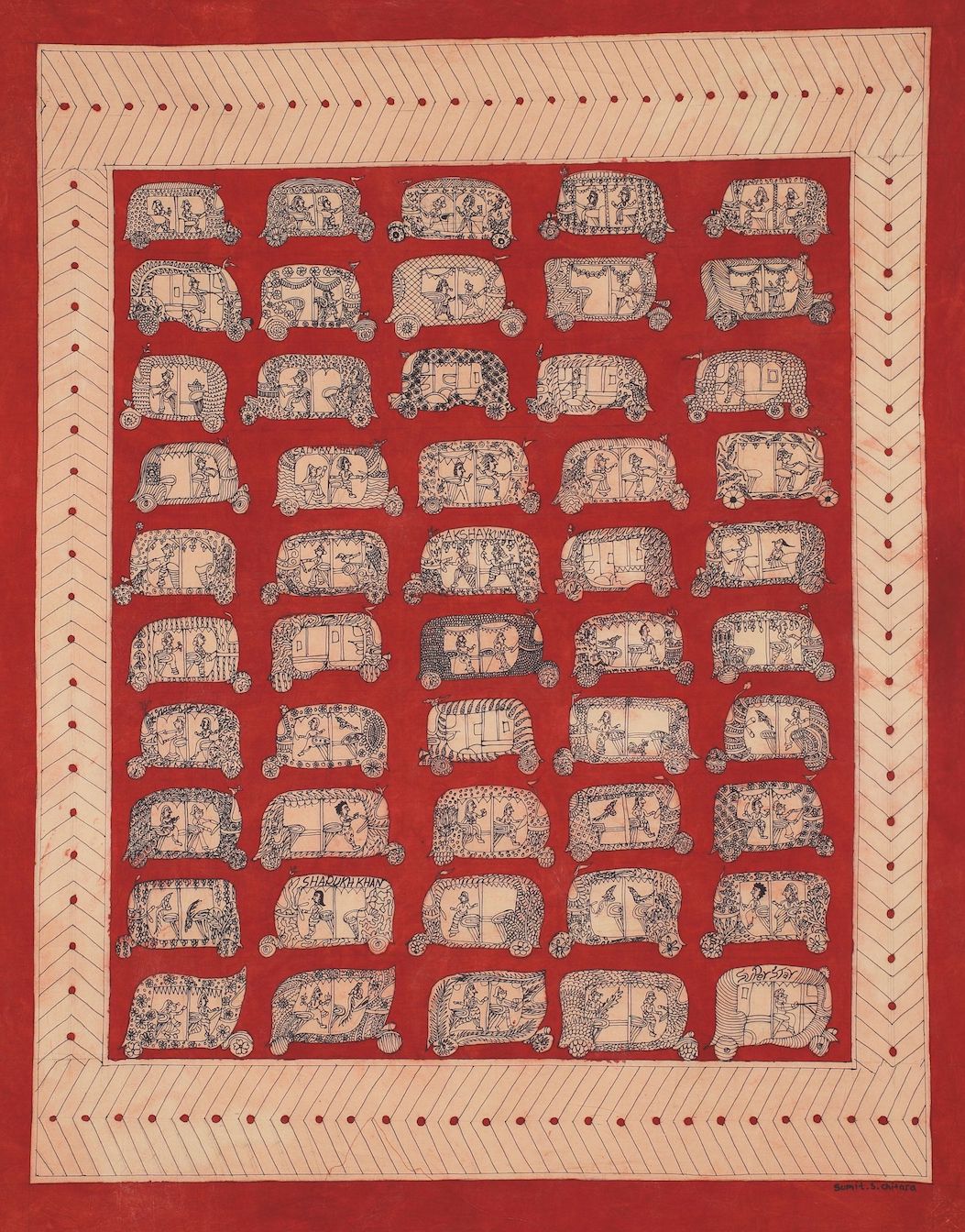
Image: Auto Rickshaw, Contemporary chandarvo by Sumit Chitara, Natural colours on textile, 2019 © Sarmaya Arts Foundation (2019.46.1)
Sanjay says, “Long back I had got a chance to live in Manchester and work there. But unfortunately, because I couldn’t understand or speak English, I had to come back just after a month. From this experience, I decided to put my son in a good school and give him a good education.” Together, the father and son are exploring digital platforms for this ancient practice. “Sumit has made a good decision by making an Instagram account showcasing our work. It is good for the business. It has also helped to create awareness amongst people outside India about the practice and craft of Mata-ni-Pachedi.”
References
- Craft Manual by Craft Canvas
- Mata-ni-Pachedi, Ahmedabad by Prof. Bibhudutta Baral, Lija M. G., Srikant B. and Vijay G, Dsource.in
- Sanjay Chitara’s Mata Paintings by Sunita Nair, CargoCollective.com
- The Fabric of Faith by Chintan Girish Modi, TheHindu.com
- Challenging Tradition in Religious Textiles: The Mata Ni Pachedi of India, by Donald Clay Johnson, University of Minnesota. University of Nebraska-Lincoln, Textile Society of America
- Kalamkari of Gujarat – Mata ni Pachedi by Sandeep Joshi, Sahapedia.org

